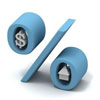Last updated: August 27 2019
Wealth Preservation Strategies: Time to Shore up Knowledge on Inflation and Taxes

Inflation rose in June and again in July to reach the Bank of Canada’s 2% target inflation rate for the second time in the second consecutive quarter. Why is that important? This article explores the effect of inflation and taxes on prices and asset values, as well as why savers and their team of advisors from the tax and financial services need to pay attention at a time when recession fears are rising.
By definition, the Bank of Canada (BoC) describes inflation as follows:
“Inflation is a measure of how much prices for goods and services are rising. Lots of factors affect prices—how difficult a product is to find, the cost of labour and the raw materials used to make it, and competition among the places selling it, to name a few. Policies that stimulate economic growth can cause inflation, too: when people have more money, their demand for products and services can rise, and that can pull up prices.”
The economy works best, says the BoC, when inflation is stable and most importantly, predictable.
High inflation, in the absence of an equal increase in income, can hurt the economy because of its effect on purchasing power – how far a dollar will go to buy goods and services. Businesses must also pay more for the inputs they have to buy to make goods and services. The degree to which they can pass along those price increases effects profitability and the capacity to invest in human resources and capital. Bottom line: when purchasing power drops, so does economic growth.
Planning for purchasing power in the future is also an important component of retirement planning. When there are high inflation rates, retirees will find that their lifetime savings have not grown enough to offset the high costs of future purchases. Financial advisors must try to accurately predict the effect of long-term inflationary pressure on their clients’ invested capital. Then they must build portfolios with enough value to cover the level of purchasing power required in the future, after both inflation and taxes.
What really matters is that the purchasing power savers will have in the future to buy the consumer goods and services they need, despite the affect of inflation on earnings and savings and  the erosion of taxes on both along the way.
the erosion of taxes on both along the way.
A couple of interesting notes: When inflation rates rise, the value of certain assets may also rise. On disposition – actual or deemed - investors pay taxes on inflation-driven gains. One could say that purchasing power, in this scenario, is actually transferred away from investors into the hands of government, because investors will have less real wealth, after taxes and inflation.
High inflationary periods actually help debtors. . .old debt can be repaid with dollars that have less purchasing power than before. This works in the favor of indebted governments as well. But that generally leads to bad news. It’s useful to look at past history to find out why. Canada experienced 12% inflation rates back in 1974, 10% more than today.
Here’s what Gordon Thiessen, former Governor of the Bank of Canada , said about inflation in a speech to the Canada Club in London in 1999:
High inflation exacts a heavy toll on an economy by making the future particularly uncertain . Long-term financing becomes less available and more costly as interest rates go up because of inflation and the higher risk premiums that lenders demand as compensation for the increased uncertainty. Inflation diverts resources away from productive investments into speculative ventures in real estate and other financial assets. And in its interaction with the tax system, high inflation encourages businesses to increase debt. These are the very types of excesses that lead to, and indeed aggravate, the economic busts that inevitably follow. During the 1970s and 1980s, Canadians had first-hand experience with such complications.
Further digging through economic textbooks can help to better understand this concept. Here’s an excerpt from Economics and Contemporary Issues [1], with some updated commentary in brackets:
“Unanticipated inflation benefits government because government is a large debtor. . .(it) gains tax revenue as nominal income increases (which) pushes people into higher tax brackets. To prevent this redistribution of income, the personal income tax system is now (partially) indexed; however the rest of the federal (and provincial) tax system is not. . . some argue that the benefits of inflation decrease government’s incentive to vigorously pursue anti-inflationary policies.”
In yet another paper, this time published by the Bank of Canada in September of 2000[2], an approach to analyzing inflation and taxes by Martin Feldstein (1997, 1999) was reported on. Mr. Feldstein found that “... even at low inflation rates, there are costs arising from the distortions introduced by the interaction of inflation with the taxation of income from capital (capital gains, dividends, and interest) in a less-than-perfectly-indexed tax system.”
Mr. Feldstein’s name appears on an earlier study as well, which was written with Joel Slemrod: Inflation and the Excess Taxation of Capital Gains on Corporate Stock . The study reflected on taxation of gains in capital stock in the U.S. and is particularly interesting, considering that the current system of capital gains taxation in Canada was introduced on January 1, 1972.
Here’s what’s important, especially to retirees: the authors argue that inflation distorts all aspects of personal income taxation, but is “particularly harsh on the taxation of capital gains.” Take note of the abstract to the study:
“The present study shows that in 1973 individuals paid nearly $500 million of extra tax on corporate stock capital gains because of the distorting effect of inflation. A detailed analysis shows that the distortion was greatest for middle income sellers of corporate stock. In 1973, individuals paid capital gains tax on more than $4.5 billion of nominal capital gains on corporate stock. If the costs of these shares are adjusted for the increases in the consumer price level since they were purchased, the $4.5 billion nominal gain becomes a real capital loss of nearly $1 billion . As a result of this incorrect measurement of capital gains, individuals with similar real capital gains were subject to very different total tax liabilities.”
In short, the authors found that the effective rate of tax substantially increases on capital gains when we fail to adjust the original cost of assets to increases in prices due to inflation over time.
However, inflation has been kept in check in Canada for approximately 25 years according to the Bank of Canada . It was in 1991 that the federal government and the Bank agreed that it was the Bank’s responsibility to bring inflation down to 2% and keep it within 1% to 3%, which it has largely been successful in doing by adjusting the “key policy interest rate”.
Here’s how that works: when inflation rises above 2%, the key policy interest rate is adjusted upward, making mortgages, operating lines and other borrowing more expensive. When inflation moves below 2%, interest rates are adjusted downward, in an effort to stimulate economic growth. Managing the target inflation and interest rates have been an important tool in risk management since the 2008 financial crisis.
But is there a corresponding negative effect to low inflation rates? That is, are low inflation and interest rates always good? The answer, of course, is no. The Bank of Canada explains it this way:
“. . . a general, persistent fall in prices is usually a symptom of deep problems in an economy. When people lose their jobs, they spend less. When firms experience diminishing sales, they lower prices. People may postpone major purchases because they think prices will continue to fall. As more money is saved, less money is spent, prices fall further, and economic activity shrinks.”
Do your clients understand the affect of inflation controls and interest rate adjustments on their investment decisions? It’s likely a more important concern today than over the past 25 years. That’s because there is new global uncertainty with pressure the U.S. president is putting on his central bank to slash interest rates, and with fears of a recession around the corner.
How to calculate inflation and its effects on savings? Bank of Canada has a good inflation calculator: https://www.bankofcanada.ca/rates/related/inflation-calculator/ . Knowledge Bureau also uses inflation adjusting in many of its sophisticated planning software tools. Try these on a complimentary basis: https://www.knowledgebureau.com/site/calculators
But perhaps most important is to take a holistic approach to planning in uncertain times.
“We recommend that advisors from the tax and financial services learn the principles of “ Real Wealth Management ,” says Evelyn Jacks, Founder and President of Knowledge Bureau, which has developed this educational framework and taught it online and in-class for over 15 years. It grants the RWM™ certification marks to qualified graduates. “Focusing on investment solutions that anticipate the effects of inflation, taxes and fees on purchasing power of income and assets in the future, is a critical component of every family’s financial health management, and by extension the most critical role for their financial advisory team,” she says.
Many experts are cautioning investors to preserve capital. For example, in an interview with BNN Bloomburg last week, Myles Zyblock, chief investment strategist at Dynamic Funds, noted that in a recession, all sectors in the stock market fall. Should investors act on his recommendation to move out of the markets into more cash and short-term government bonds, a keen eye on the tax consequences would also be required.
These are topics will be discussed in greater depth at the 2019 Distinguished Advisor Conference in Puerto Vallarta, Mexico November 10-13, where the daily themes will be:
- Economic Resilience in Creating Family Wealth
- Client Relationship Management, Ethics and Compliance
- New Opportunities in Wealth Distribution
Please download a copy of your Special DAC Report for more details.
Additional educational resources : Register for DAC 2019 before September 15, or study online and become a Real Wealth Manager ™.
[1] Economics and Contemporary Issues [1] , 3rd ed. (Dryden Press, 1996), eds. Michael Edgmand, Ronald Moowaw, and Kent Olson.
[2] Inflation and the Tax System in Canada: An Exploratory Partial-Equilibrium Analysis, Brian O’Reilly and Mylène Levac
Research Department, Bank of Canada
COPYRIGHT OWNED BY KNOWLEDGE BUREAU INC., 2019.
UNAUTHORIZED REPRODUCTION, IN WHOLE OR IN PART, IS PROHIBITED.
